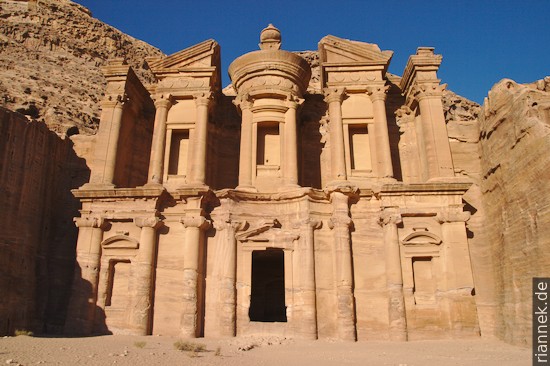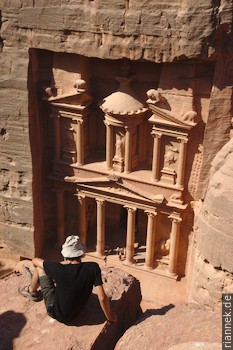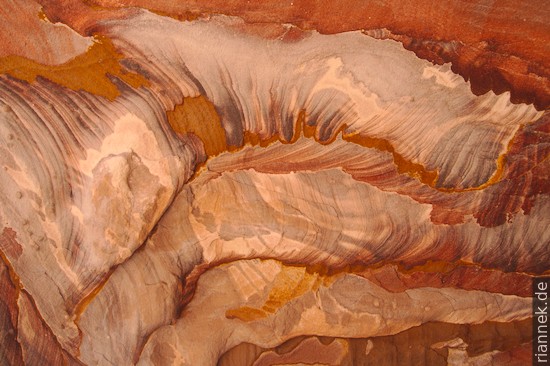
The magnificent façades of the tombs carved into the sandstone appear almost baroque. Baroque but from antiquity, from the time of Hellenism and the Romans. The Nabataeans controlled trade with southern Arabia until they were swallowed by Rome. Not much is preserved of the city itself (the temple is interesting), so you almost get the impression that the Nabataeans did nothing but carve tombs into the rock (apart from trading incense, of course).

The entrance to Petra leads through the Siq, a deep gorge with vertical walls that winds through the Paleozoic sandstone. Just when you are no longer expecting it, a small section of the “treasure house”, one of the most impressive tombs, is suddenly visible in front of you. If you didn’t get up early, you will be caught by a stream of tourists here at the latest. If you escape the whirlpools and maelstroms of the tourist crowds, you walk through the last section of gorge to the city situated in a valley. Wherever you look, you now see tombs carved into the bulbous, cauliflower-like sandstone mountains. From close up, the sandstone looks like a painting in places, fluid pathways and redox fronts have painted the rock in red-yellow-blue-white-beige arcs and lines (cf. The World of Mineral Deposits). Scrambling through hundreds of insignificant tombs is just as much fun as the long walk up to the “monastery”, near which the view drops down to the Jordan Rift Valley. If you take in one or two more viewpoints, three days fly by…

Read on
Backpacking trip Middle East and Caucasus 2008
Wadi Rum
Dana
Karak
Jerash